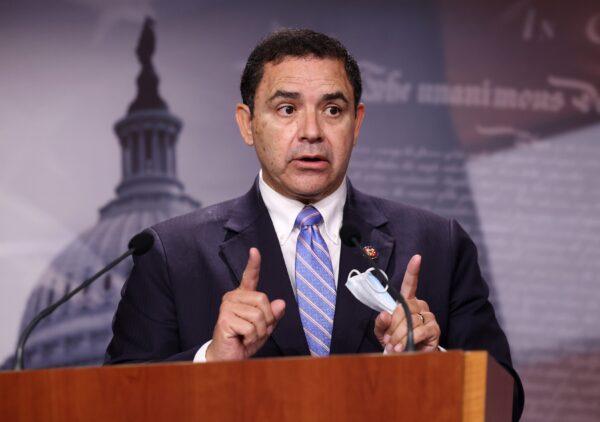U.S. Immigration and Customs Enforcement (ICE) is considering “virtual” arrests to address a growing backlog of unprocessed illegal immigrants.
Deputy Director of ICE Tae Johnson told the House Appropriations Committee on April 18 that his agency has been overloaded with work due to the unprecedented influx of illegal immigrants along the U.S. border with Mexico over the past two years.
One result of this has been that many illegal aliens captured by ICE and Border Patrol have been released into the interior without legal papers ordering them to appear in court.
It’s standard procedure to issue “Notices to Appear” (NTAs) to illegal aliens being released from flooded ICE detention facilities along the border. NTAs constitute the first step in beginning the legal deportation process.
But ICE and Border Patrol have been so inundated by illegal aliens that many have been released without being issued an NTA.

Backlogs Until 2033
Johnson made the request during an exchange with Ranking Member Henry Cuellar (D-Texas), one of the most conservative Democrats in the House.During the exchange, Cuellar expressed “concerns” about the immigration backlog built up in some American cities. In New York City and San Antonio, it is projected to take until 2033 for illegal immigrants to even appear before ICE. After that, it can take another two to three years before they get a day in court.

The “virtual arrest” option was one such initiative Johnson said that ICE was pursuing.
Johnson cited “a request to the Hill to give us the authority that we can actually serve it virtually and agree to have people accept their documents electronically.”
This scheme poses practical as well as legal challenges.
Because of the strain on resources at ICE facilities, many illegal aliens apprehended by immigration enforcement were released without being fingerprinted. Johnson acknowledged that many illegal aliens would still need to undergo this process in person.
If illegal aliens were issued an NTA via email or other online communications, it would be difficult for authorities to prove in court that they received the NTA.
Immigration courts have also been overwhelmed by the level of illegal immigration, with two million cases on backlog and counting.
Johnson’s proposed “virtual arrest” scheme also could be ineffective, as in the past few illegal aliens released into the interior have shown up for their court date.



